BMW iX3 review
BMW has created some of the most innovative and unorthodox electric cars to hit the market with the i3 and i8.
But the BMW iX3 marks a change of direction for the German brand.
On first glance it looks almost identical to an X3, albeit with a smoother grille and unique alloy wheels. The mid-sized SUV joins the i sub-brand but in the most regular way BMW has done to date.
Beneath the skin all the ICE bits have been replaced by batteries and an electric motor.
Other than some blue trim highlights and a proliferation of iX3 badges there’s little to give away the EV workings of BMW’s latest electric vehicle.
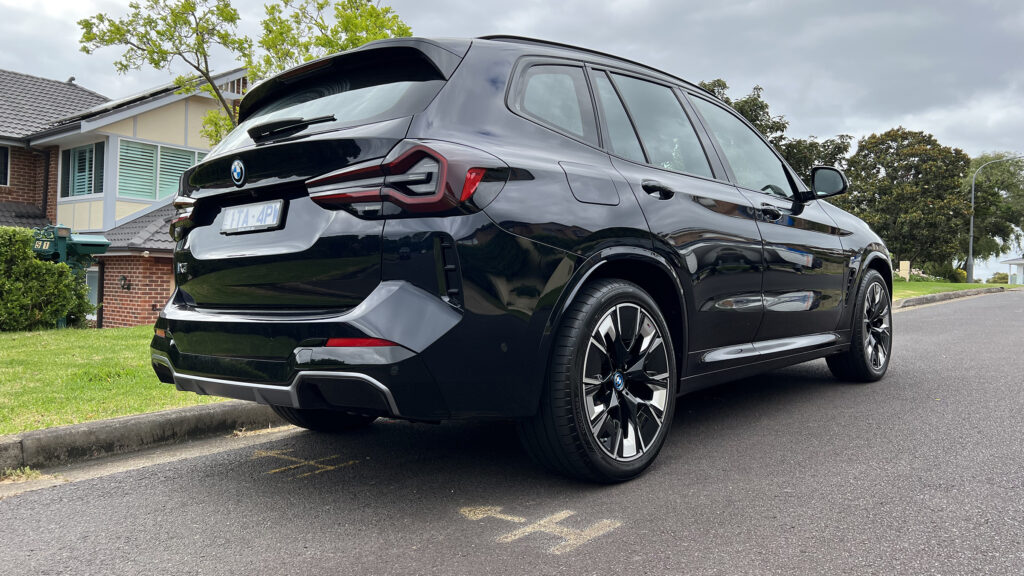
Like so many EVs sold in Australia – Tesla Model 3, Polestar 2, Volvo XC40 and MG ZS EV – the iX3 is made in China.
Value
There’s only one iX3 model and at $114,900 plus on-road costs it slots into the regular X3 lineup just below the M40i ($115,900).
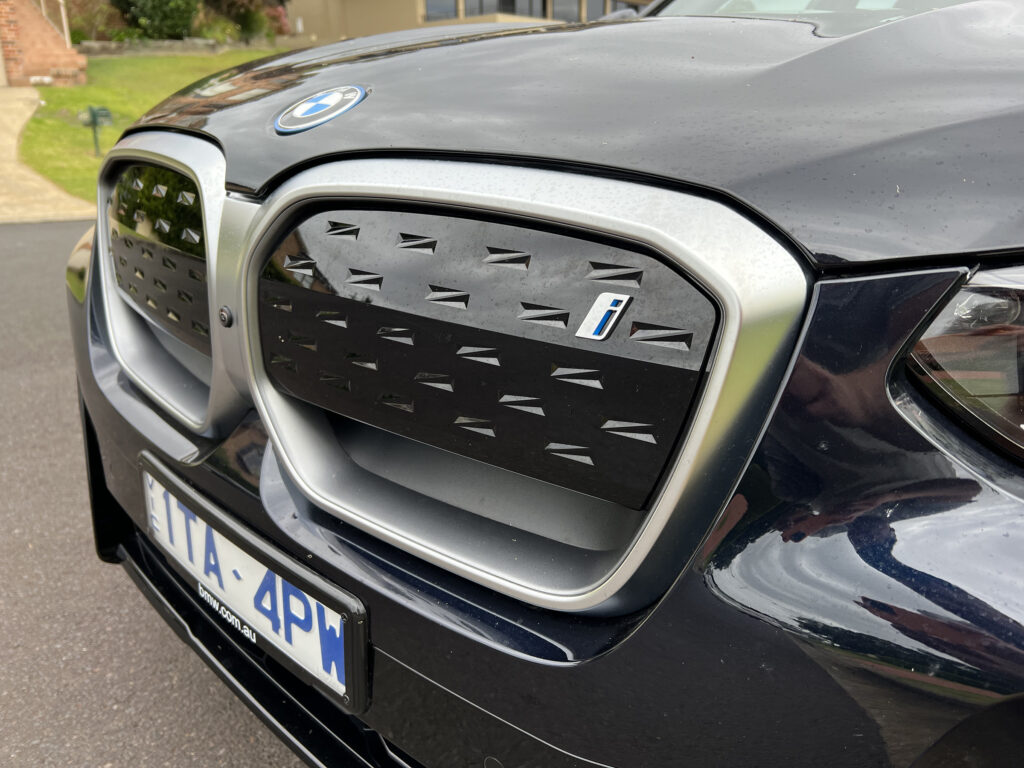
There’s a similarly high level of gear, including 20-inch alloys, M Sport design highlights, digital instrument cluster, smart key entry, adaptive suspension, electrically adjusted heated front seats, electric tailgate and wireless Apple CarPlay and Android Auto connectivity. The BMW Live Cockpit Plus infotainment system with a 12.3-inch screen is also standard.
Additional features such as a fantastic Harman Kardon sound system, head-up display, gesture control, panoramic sunroof, ambient lighting and higher quality leather finishes help justify the price premium over the X3 xDrive 30i ($87,900) that it is mostly closely matched to on performance.
Like all luxury electric SUVs, the iX3’s price tag means it misses out on the rebates and incentives offered by various states and territories.
But it does pick up a five-year charging subscription that means free charging at Chargefox locations.
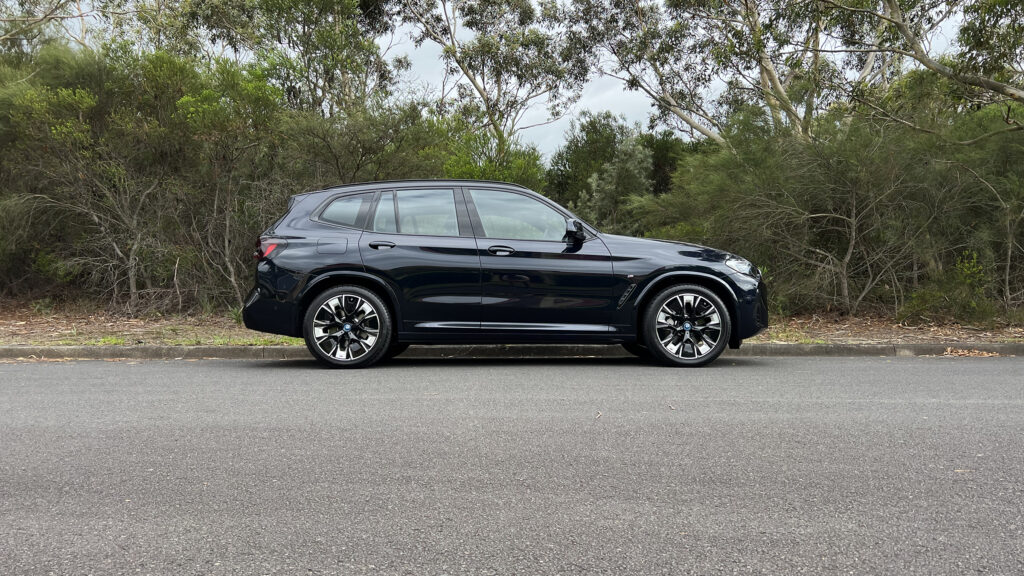
However, considering its closest rivals are the Mercedes-Benz EQC, Jaguar I-Pace and Audi e-Tron, the iX3 arrives with a price advantage over them all.
However, whereas all those rivals have dual motor setups driving all four wheels, the iX3 has a single electric motor driving only the back wheels.
Inside
Inside it’s all thoroughly X3 normal, from the seats to the functionality. While it’s built a world away from other X3s (these days most come from the United States and South Africa, whereas the iX3 is sourced from China), there’s no difference in the attention to detail and quality of finishes. We spotted one minor alignment hiccup where two pieces of stitching on the instrument cowling meet, but everywhere else was impressively put together.

Up front the sports seats hug nicely and the iDrive system is intuitive in its operation. The gesture control occasionally reacts to a wave of the hand when you may have simply been animated rather than wanting to adjust the volume or answer a phone call, but it’s a nice addition.
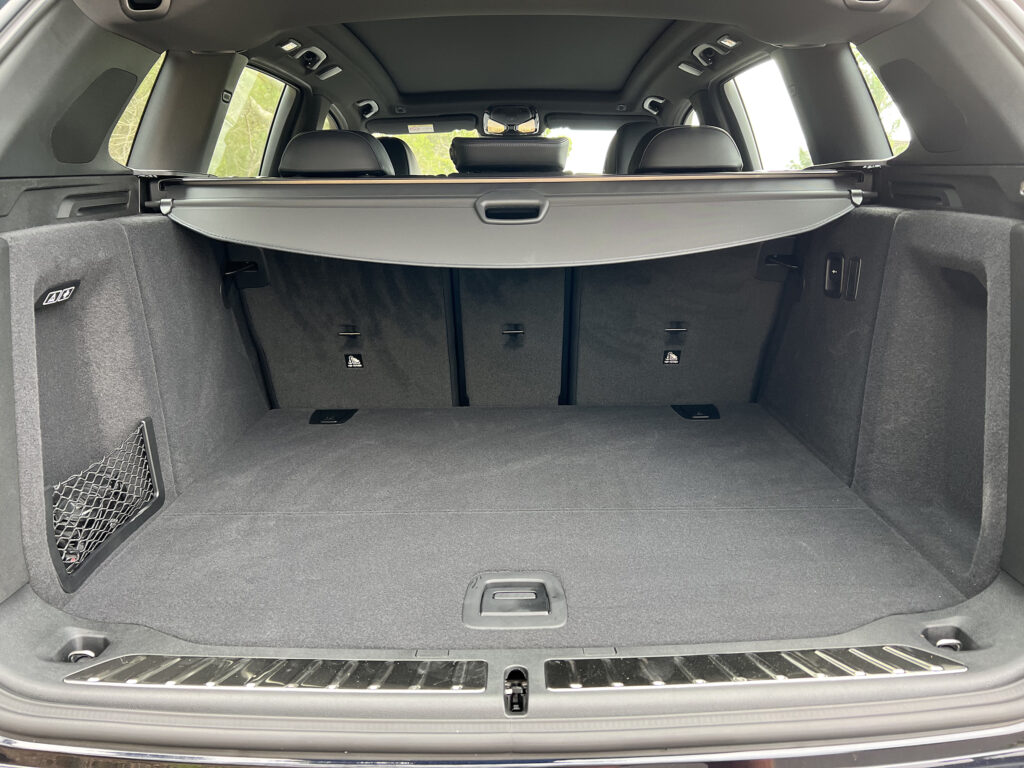
In the rear there’s good head and leg room for what is a mid-sized SUV and a retractable cover blocks out the sun from the panoramic sunroof on scorching days. The transmission tunnel in the centre of the floor makes foot space less forthcoming for the person in the middle, a hangover from the ICE architecture.
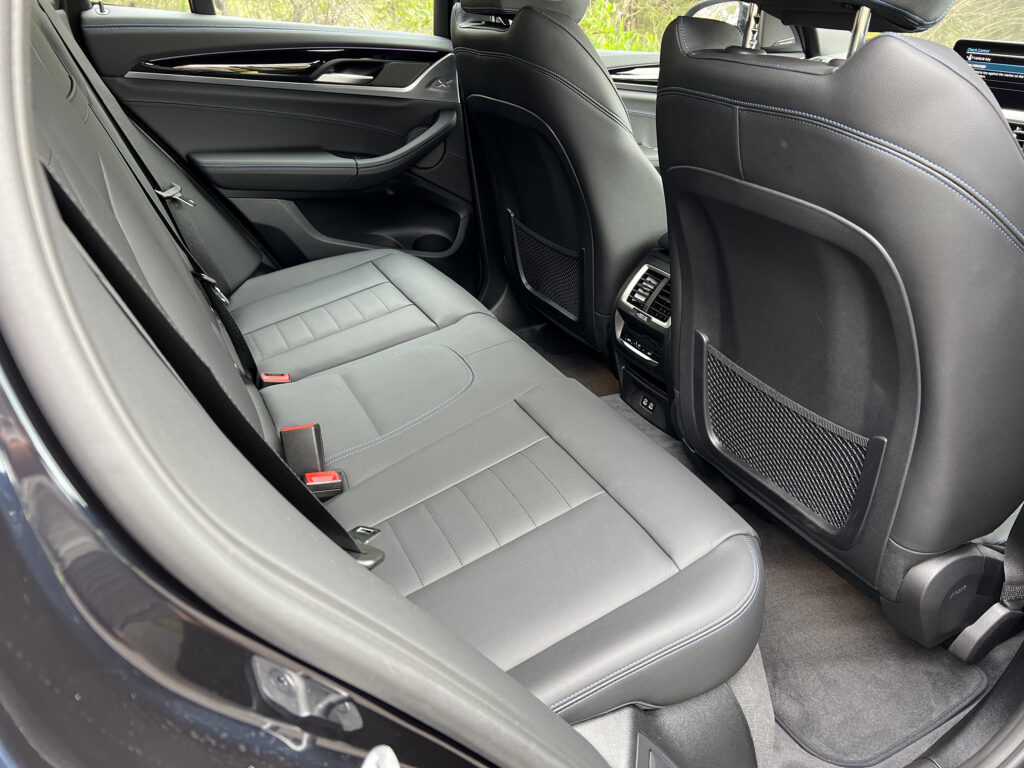
At 510 litres, boot capacity is 40 litres down on other X3s due to a higher floor (there’s an electric motor under it!), but it’s still a very useful space.
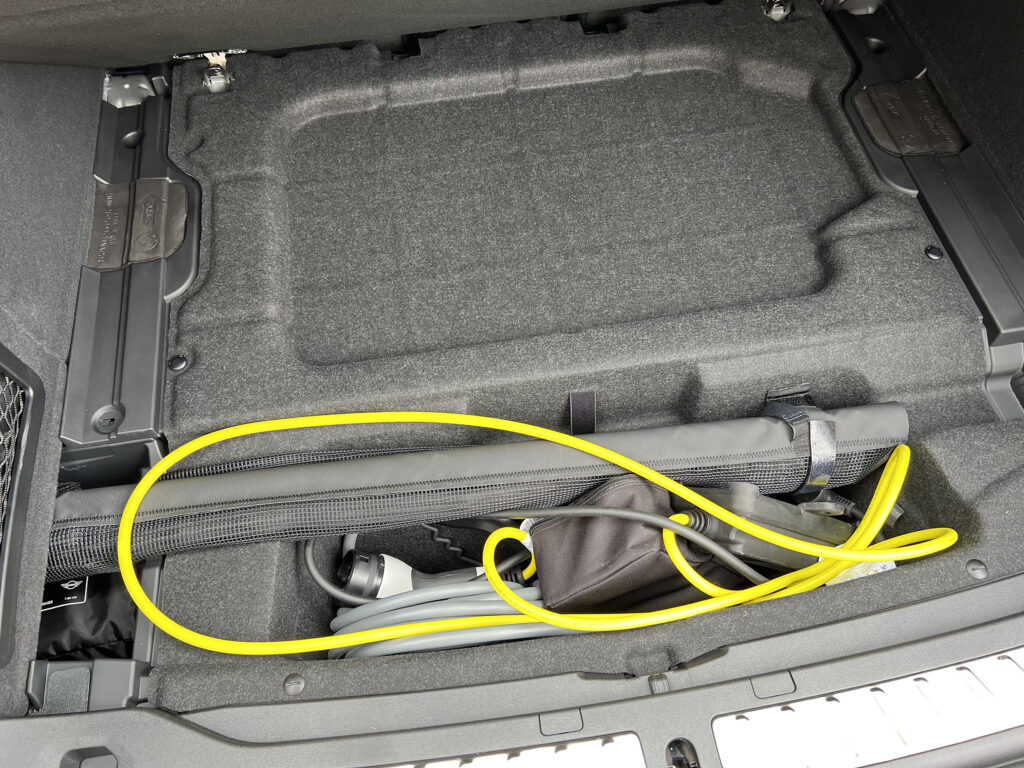
The boot has a 40/20/40 split-fold with underfloor storage for charging cables, leaving the flat load area solely for luggage.
While it’s only a single motor, under the bonnet of the iX3 is a stylish piece of plastic covering the various electronic components – but no additional storage. It’s one of the rare ICE compromises in the iX3.
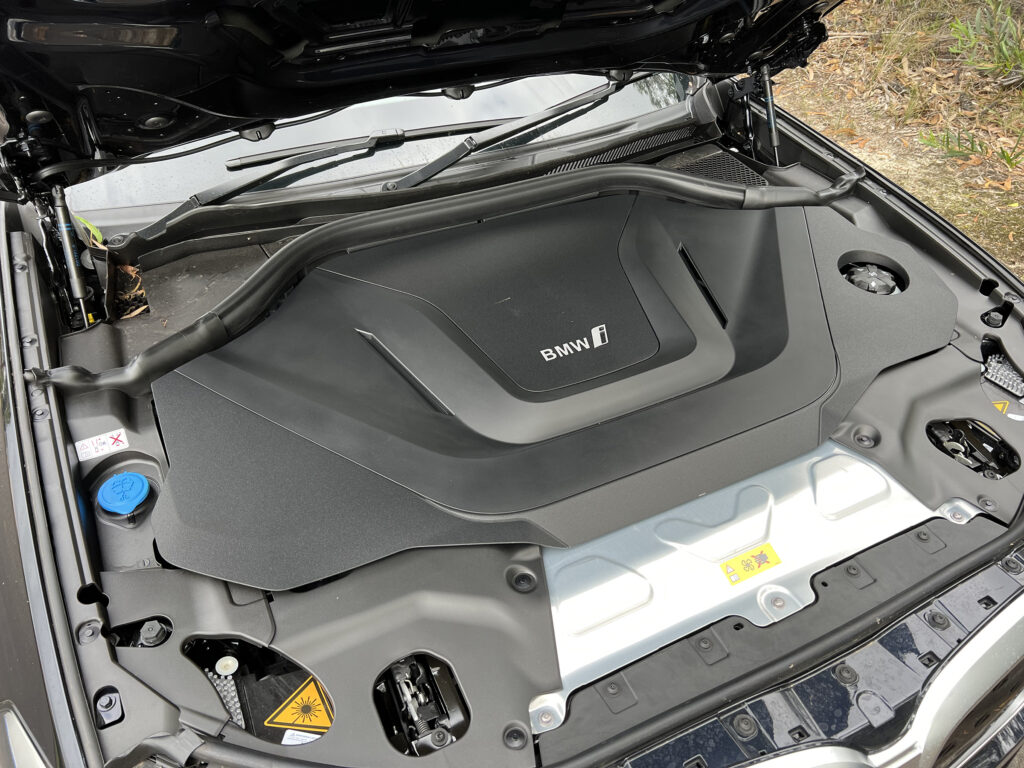
Performance and efficiency
Most electric SUVs offer all-wheel drive. Not the iX3. Rather than the dual motor setup employed by the bigger BMW iX (a completely different vehicle that’s not only larger than the iX3 but also built on a dedicated EV architecture), the iX3 gets a single motor hidden beneath the boot. It drives only the rear wheels.
With 210kW and 400Nm it’s among the more powerful single motor EVs available.
BMW makes its own electric motors and clearly some of the petrol DNA the brand is known for has leached into the iX3.
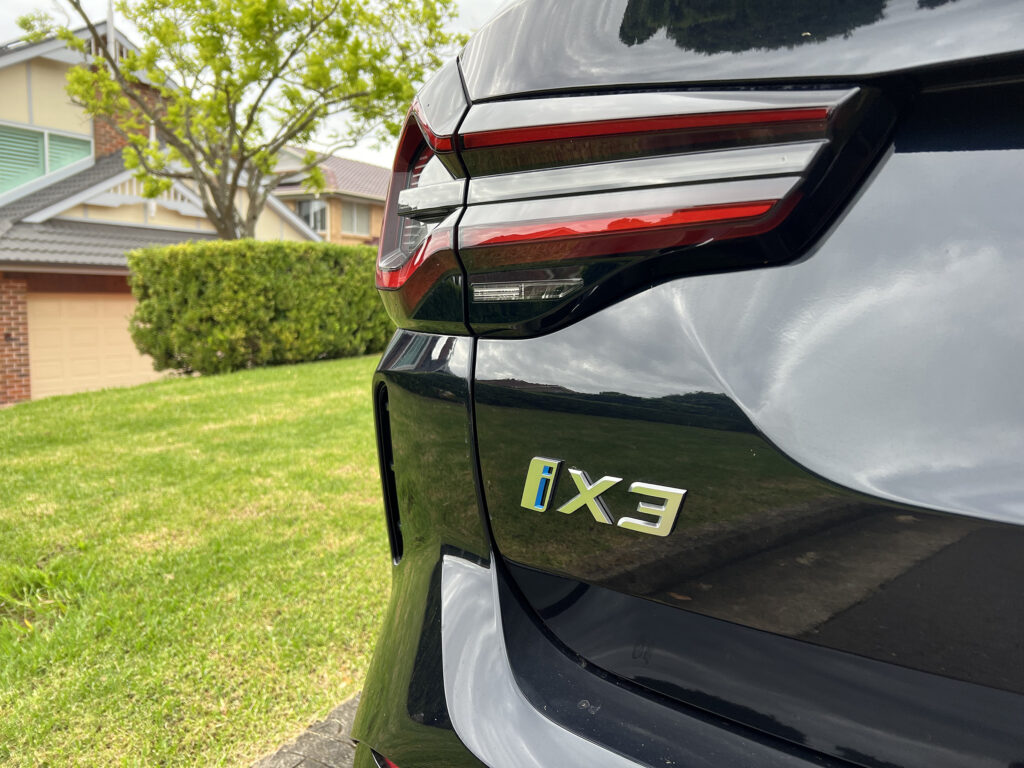
The e-motor is claimed to rev up to 17,000rpm for a top speed of 180km/h. But BMW claims the 210kW power peak “early and can be sustained over a wide rev band”; that flexibility is classic BMW.
Claimed 0-100km/h acceleration is 6.8 seconds and it feels every bit as lively as that.
Stab the throttle at any speed and a jolt ricochets through the car. It calls for finesse if you do want a quick power hit, just to make things smoother for passengers.
Even at 100km/h there’s ample in reserve, an indication the iX3 lives up to the badge.
The WLTP range is 461km but as with all EVs we found that optimistic in real world conditions. Closer to 370km seems more like it.
Still, it’s a thoroughly useful range and doesn’t seem overly perturbed by aggressive driving.
Various drive modes adjust throttle response and regenerative braking, the latter available with an adaptive mode that adjusts to other traffic.
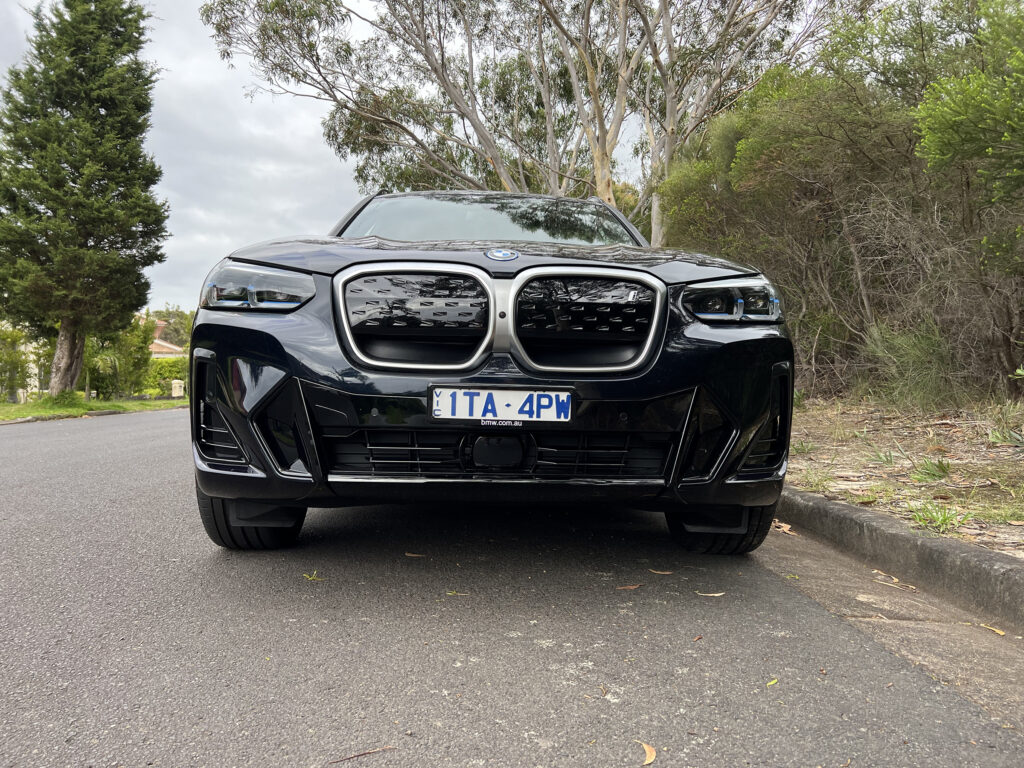
Oddly, there are no paddles on the steering wheel to adjust the regen, so instead you’re into menus or the separate B braking mode on the gear selector.
We found it easier to pick a fixed regen mode and use the B mode that kicks in when you slit the gear selector to the side. It engages more aggressive regen if you encounter a hill or want to slow for traffic lights.
Charging
The battery capacity is rated as 80kWh, but only 74kWh is usable.
The maximum AC charging rate for the iX3 is 11kW, so a full charge would take around 7.5 hours.
DC charging can be done at up to 150kW.
BMW claims the iX3 will pile on 100km of range in as little as 10 minutes. But that wasn’t our experience during a charge from 18-100 percent.
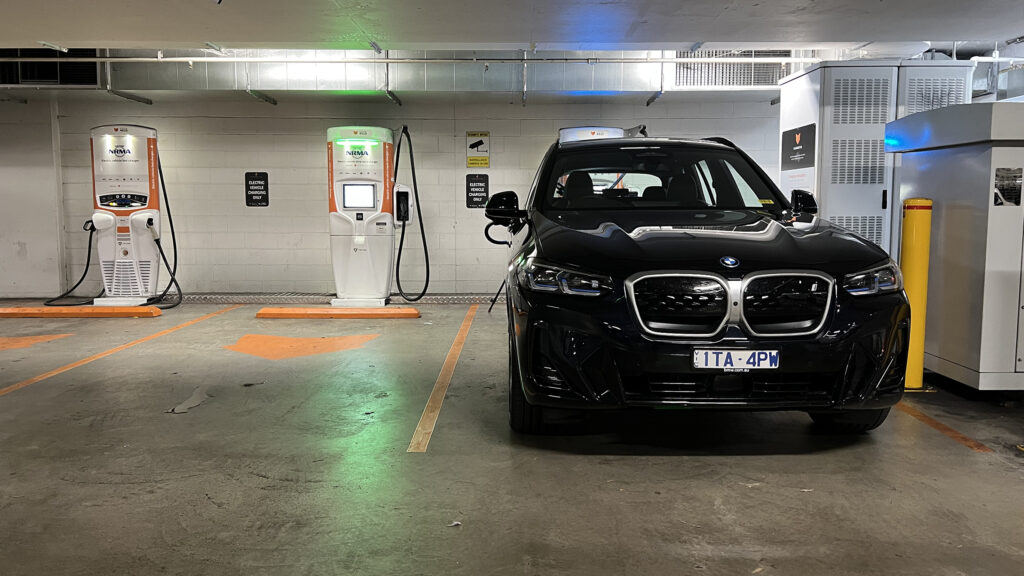
Things started off strongly, the iX3 sucking in 156kW against its claimed DC charging maximum of 150kW. Not bad, but it was shortlived, the onboard charger slowing things to more like 50kW or less within a few minutes.
There were occasional flashes up to 80 or 90kW, but they were shortlived.The claim for a 10-80 percent charge – starting at a lower state of charge than we did – can be done in as little as 32 minutes.
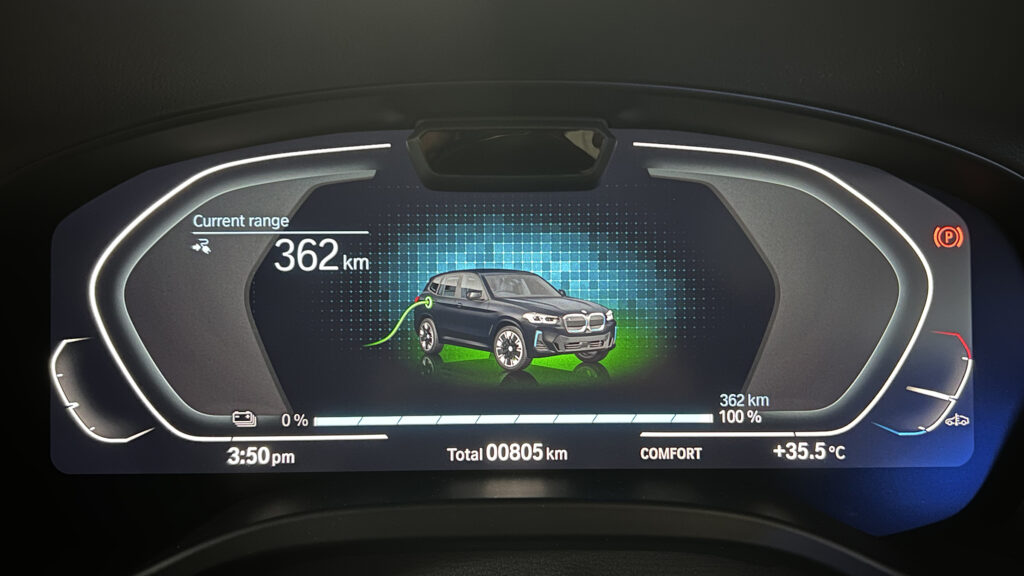
But our experience was it takes a lot longer. We calculated the 20-80 percent charge time and it was a fraction over 43 minutes.
Fast, but not quite as slick as the brochure.
Ride and handling
At 275mm wide, the rear tyres are broader than those up front (245mm). That helps in getting all the torque to the bitumen, although get too enthusiastic and it can trigger some stability control electronics to contain things.
It’s beautifully calibrated, though, and at every corner the iX3 feels athletic and energised.
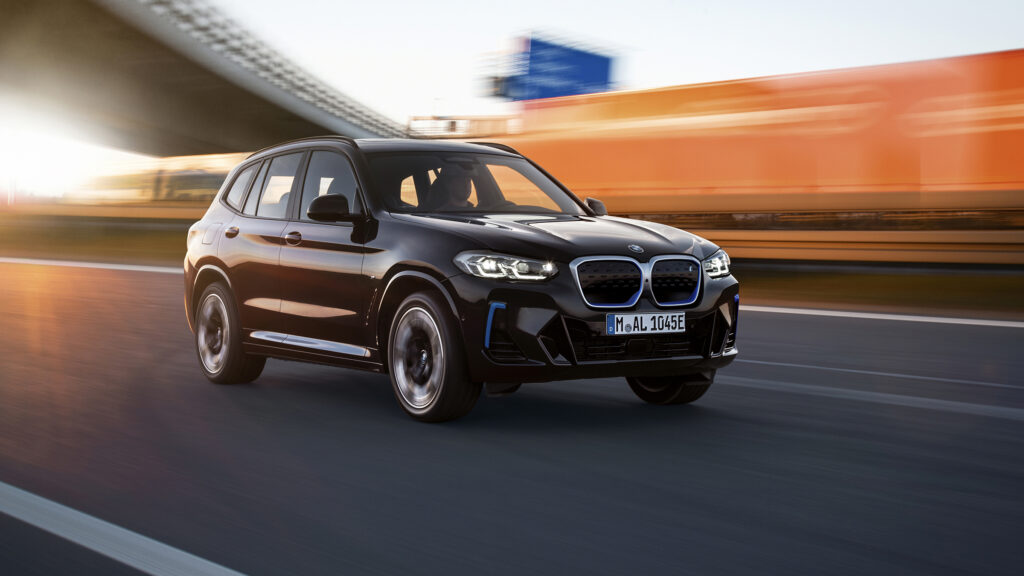
It’s also planted and secure, something that assists with getting the most from what is a highly capable SUV.
Having around half a tonne worth of batteries buried in the floor helps there, because the centre of gravity feels like it’s well below the occupant line of the car.
There’s very little leaning in bends, the iX3 instead retaining its composure when the pace is stepped up.
Ultimately grip levels run out up front, the front wheels scrubbing wide in a predictable arc.
While the steering weight adjusts with the drive modes.
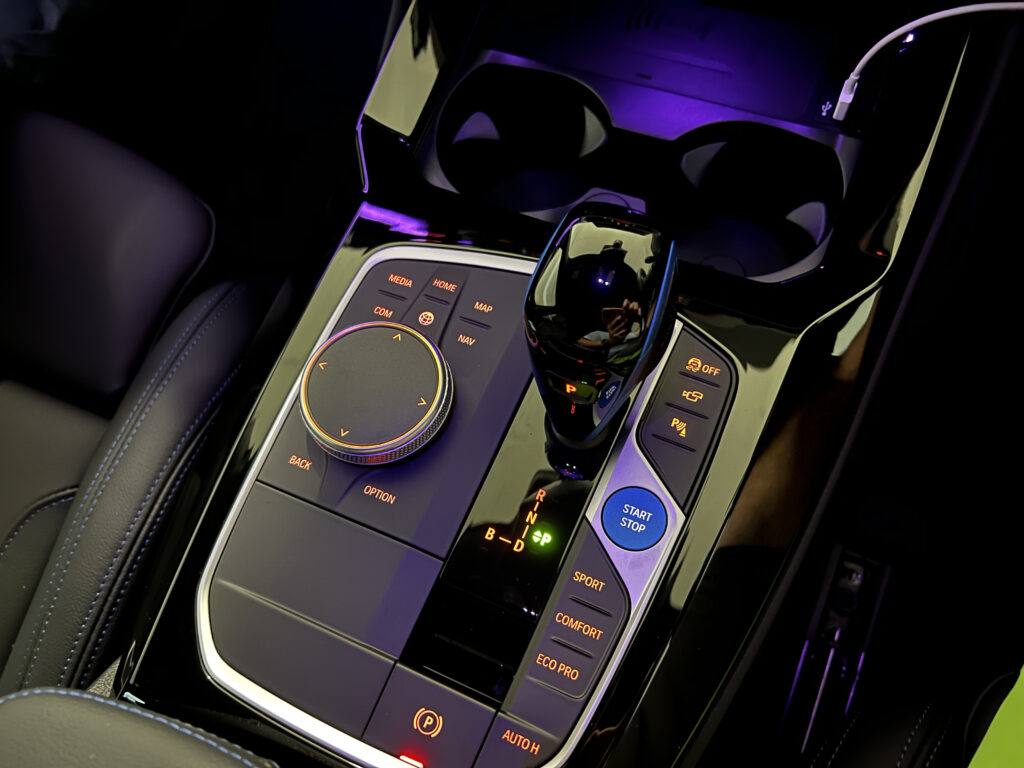
The well controlled suspension has a taut but nicely controlled setup that nicely matches the athletic nature while still ensuring thoroughly respectable levels of comfort.
Talking point
The iX3 is the first car with Hollywood sounds. The so-called IconicSounds were created by legendary composer Hans Zimmer, an Oscar winner and the man responsible for The Lion King score.
Take off and there’s a futuristic hum, almost like a modern take on knobbly tyres rumbling down the road. It’s certainly distinctive and takes some acclimatisation, although like a petrol engine you learn to live with it.

There are different levels of sound that can be lined up with the different drive modes. Or you can switch it off altogether for more of the EV silence more typical of an electric car.
Safety
There’s load of driver assistance tech designed to keep you on the road.
Autonomous emergency braking can avoid crashes or reduce their severity, while Lane Keeping Assistant includes some mild self steering to help avoid collisions. There’s also blind spot warning and cross traffic alert front and rear.
While some X3 models get a five-star ANCAP safety rating, the iX3 is so far unrated.
Verdict
On price alone the iX3 has carved itself a worthy niche in the luxury SUV space. Sitting below many luxury rivals give it an advantage.
And while it lacks the dual motor fanfare of the iX, the iX3 lives up to the BMW name beautifully with an engaging driving experience and plenty of luxury gear.
While occasional ICE compromises are evident there’s enough BMW flair to cement its place as a slick-driving five-seater that nails the EV brief.

BMW iX3 specifications
Price: $114,900 , plus on-road costs
Basics: EV, 5 seats, 5 doors, SUV, RWD
Range: 460km (WLTP), 370km (realistic)
Battery capacity: 74kWh
Battery warranty: 8 years/100,000km
Energy consumption: 18.9kWh/100km
Motors: 1 rear 210kW/400Nm
AC charging: 11kW, Type 2 plug
DC charging: 150kW, CCS combo plug
0-100km/h: 6.8 seconds

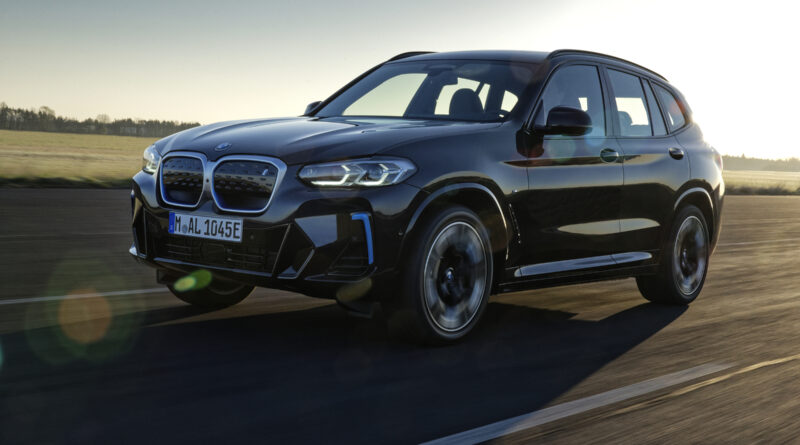
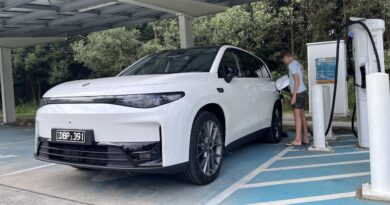
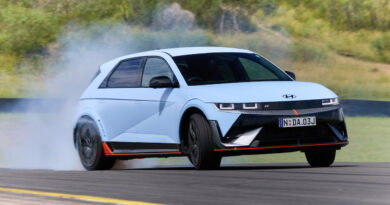
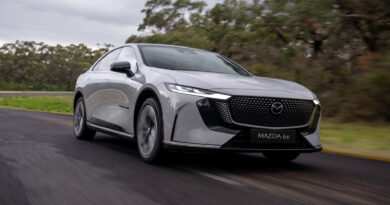
That range is quite low for that size battery, must be highly inefficient consumption
There’s 74kWh of usable battery capacity. Somewhere around 20kWh/100km in real world driving didn’t seem too bad to me. You could get it below that driving more gently.
Looks like an exhaust pipe at the back???